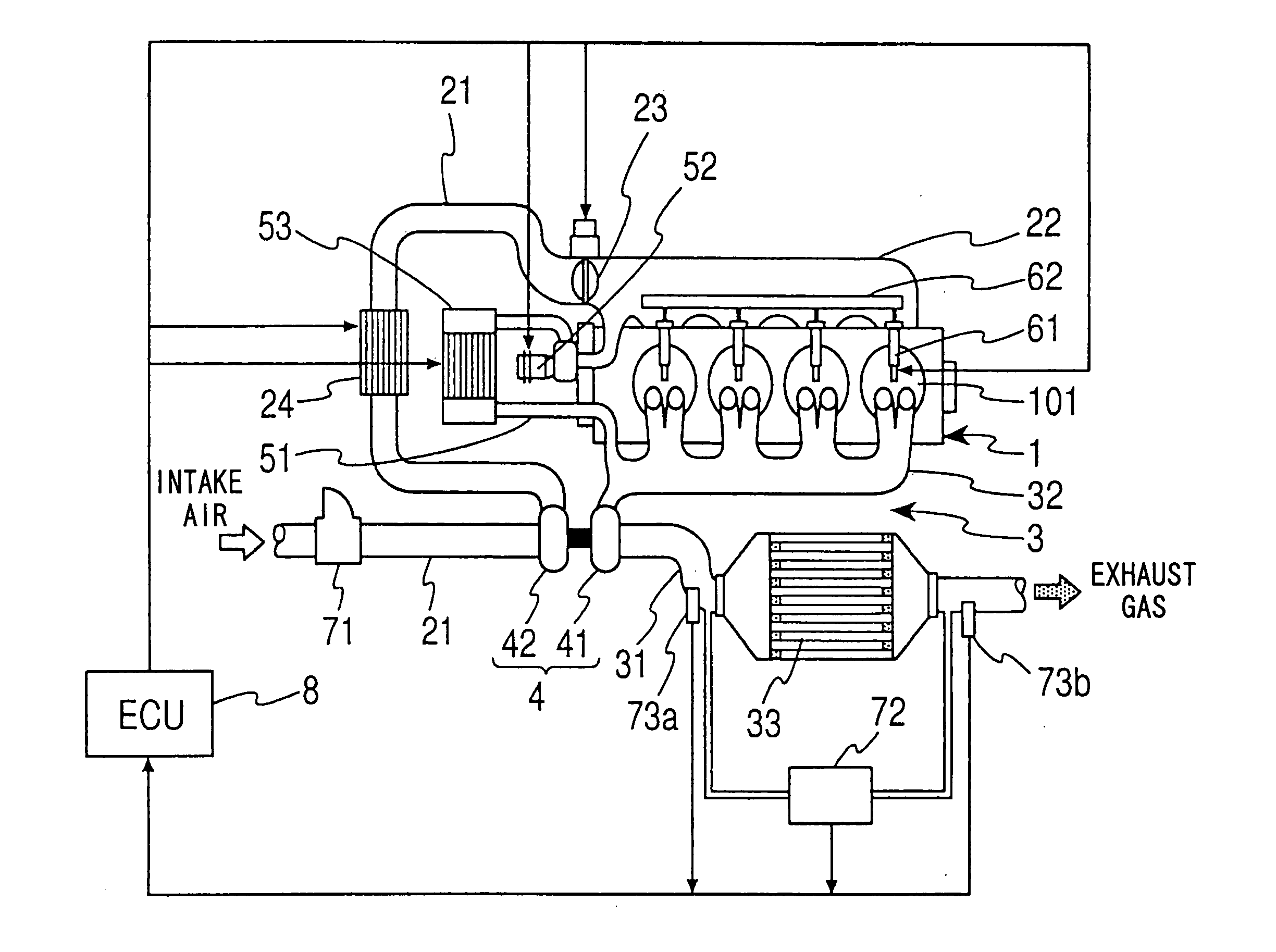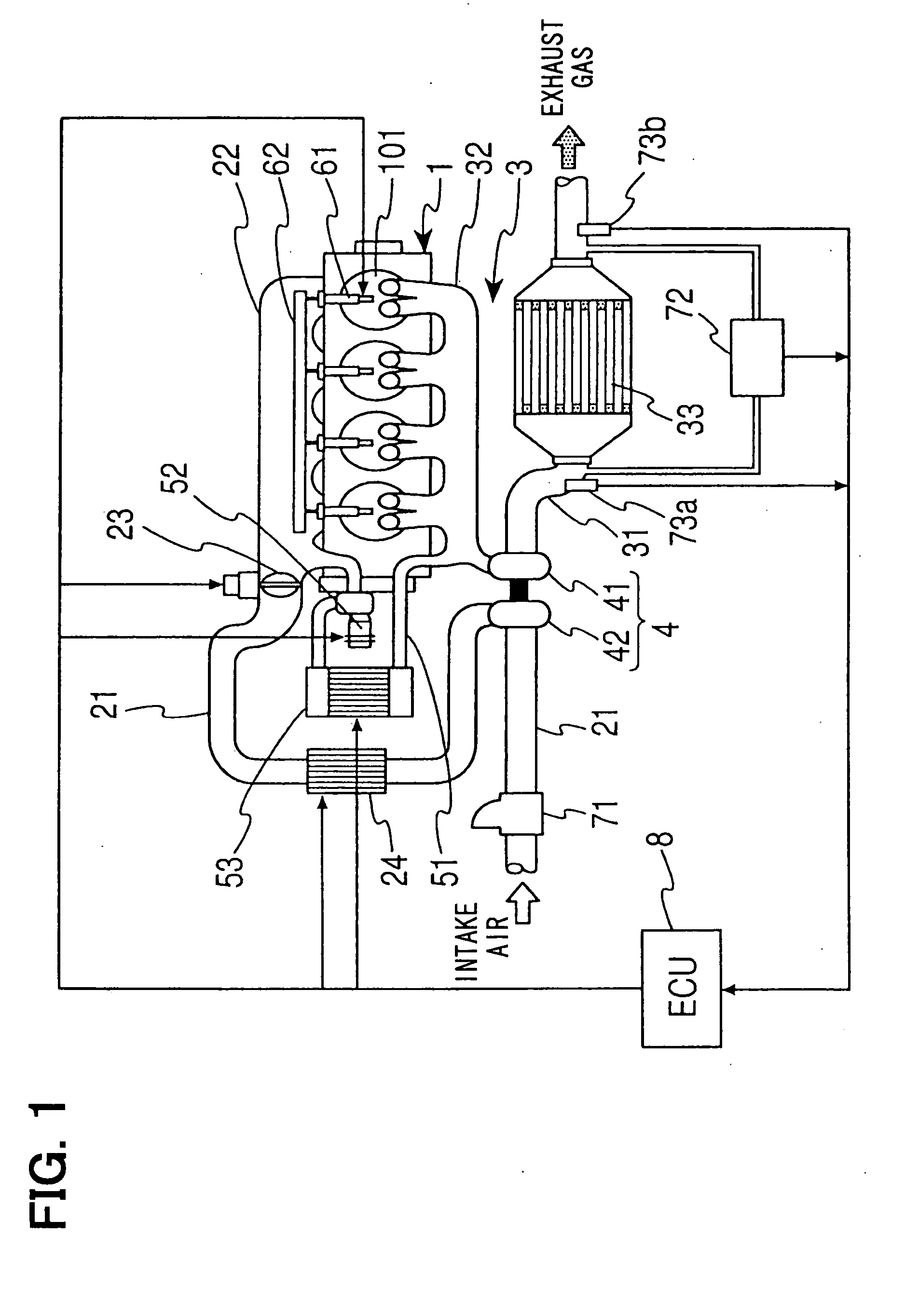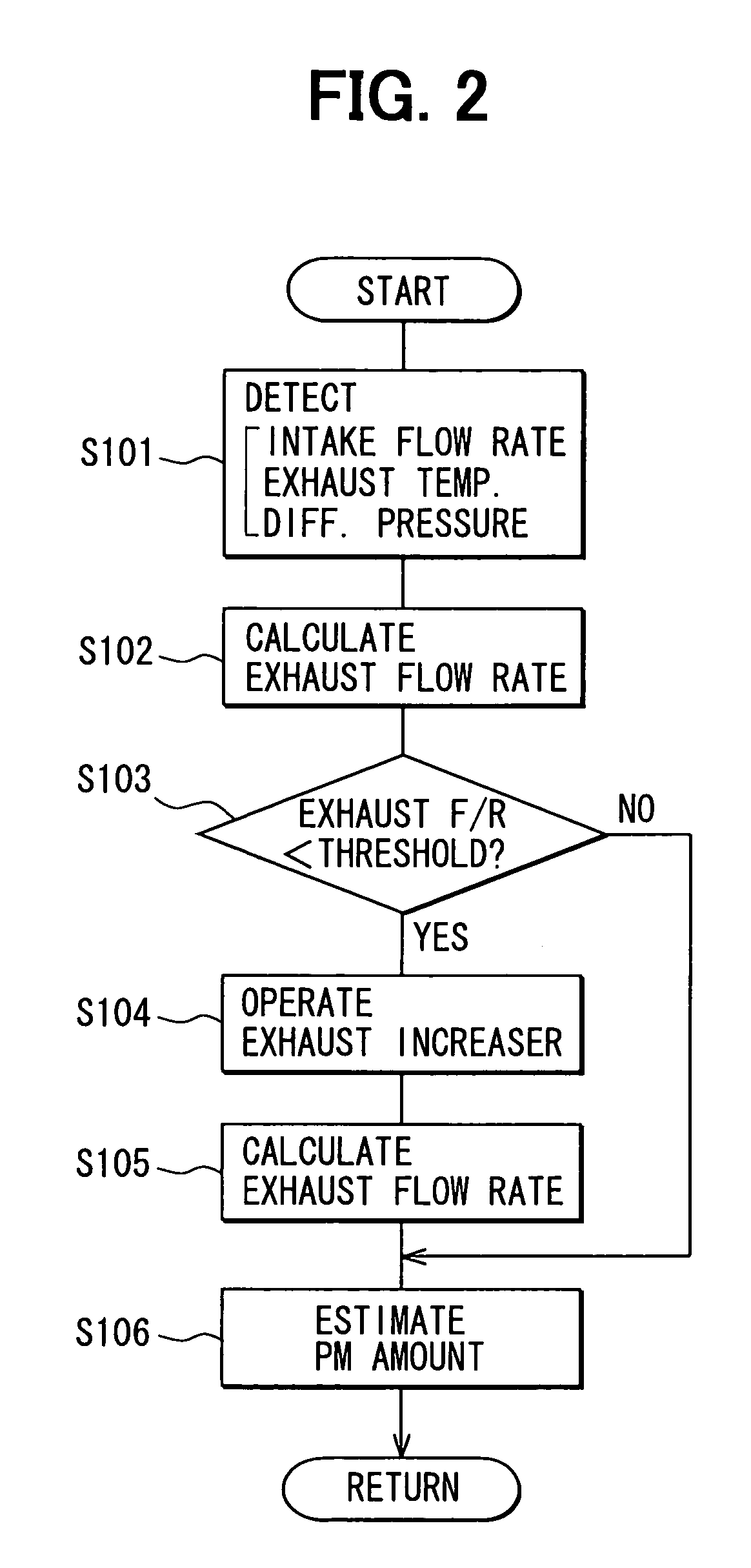Exhaust emission control system for internal combustion engine
a technology of emission control system and internal combustion engine, which is applied in the direction of electrical control, exhaust treatment electric control, separation process, etc., can solve the problems of increasing engine backpressure, reducing engine power, and difficult to accurately estimate the amount of particulate matter in the particulate filter, so as to increase the detection accuracy of differential pressure and avoid over-cash. , the effect of increasing the cos
- Summary
- Abstract
- Description
- Claims
- Application Information
AI Technical Summary
Benefits of technology
Problems solved by technology
Method used
Image
Examples
first embodiment
[0026] the present invention, as shown in FIG. 1, has an exhaust emission control system for removing particulate matters in an exhaust gas of a diesel engine (an internal combustion engine) 1. The engine 1 has a plurality of fuel injectors 61 and a common rail 62 in communication with each of the fuel injectors 61. The fuel injectors 61 inject a fuel supplied from the common rail 62 into combustion chambers of cylinders of the engine 1.
[0027] An intake pipe 21 and an intake manifold 22 of the engine 1 are connected to each other. An intake throttle valve 23 is interposed between the intake pipe 21 and the intake manifold 22 for adjusting an intake flow rate. The intake pipe 21 has an airflow meter 71 for detecting the intake flow rate.
[0028] An exhaust gas of the engine 1 flows out of exhaust ports 101 of the engine 1 and through an exhaust passage 3. The exhaust passage 3 includes an exhaust pipe 31 and an exhaust manifold 32 connected to each other. The exhaust pipe 31 is provid...
second embodiment
[0052] the present invention removes particulate matters in the DPF 33 by a control process shown in FIG. 7.
[0053] In steps S201 to S207, the ECU 8 identifies a maximum exhaust flow rate during a predetermined time. In step S201, the ECU 8 sets a variable k to zero. In step S202, the ECU 8 increments the variable k by one.
[0054] In steps S203, the ECU 8 detects the intake flow rate, the exhaust temperature, and the differential pressure. In step S204, the ECU 8 calculates the exhaust flow rate with the intake flow rate, the exhaust temperature, and the differential pressure. The steps S203 and S204 are substantially the same as the steps S101 and S102 in the first embodiment.
[0055] In step S205, the ECU 8 stores the exhaust flow rate in a RAM provided in the ECU 8. The RAM is configured to be able to store n pairs of the exhaust flow rates and the differential pressures as described below, wherein n denotes a constant number.
[0056] In step S206, the ECU 8 determines whether the v...
third embodiment
[0071] Thus, the exhaust emission control system of the third embodiment raises the accuracy of the analog output voltage of the pressure difference sensor 72 by (P0 / Pmax) times when the analog output voltage is not sufficiently large for estimating the particulate accumulation amount. Accordingly, the system can estimate the particulate accumulation amount with high accuracy even when the exhaust flow rate is not sufficiently large for the estimation.
[0072] Alternatively, the process of the step S303 may be done as a comparison of the exhaust flow rate and a threshold value.
[0073]FIG. 11 depicts a fourth embodiment of the present invention having an ECU 8B that has a different configuration from the ECU 8A in the third embodiment for removing particulate matters in the DPF 33. FIG. 11 schematically depicts a signal processing unit 80B in the ECU 8B.
[0074] The signal processing unit 80B can change an input-to-output ratio of the signal. Specifically, the signal processing unit 80B...
PUM
| Property | Measurement | Unit |
|---|---|---|
| pressure difference detector | aaaaa | aaaaa |
| pressure | aaaaa | aaaaa |
| exhaust flow rate | aaaaa | aaaaa |
Abstract
Description
Claims
Application Information
 Login to View More
Login to View More - R&D
- Intellectual Property
- Life Sciences
- Materials
- Tech Scout
- Unparalleled Data Quality
- Higher Quality Content
- 60% Fewer Hallucinations
Browse by: Latest US Patents, China's latest patents, Technical Efficacy Thesaurus, Application Domain, Technology Topic, Popular Technical Reports.
© 2025 PatSnap. All rights reserved.Legal|Privacy policy|Modern Slavery Act Transparency Statement|Sitemap|About US| Contact US: help@patsnap.com



